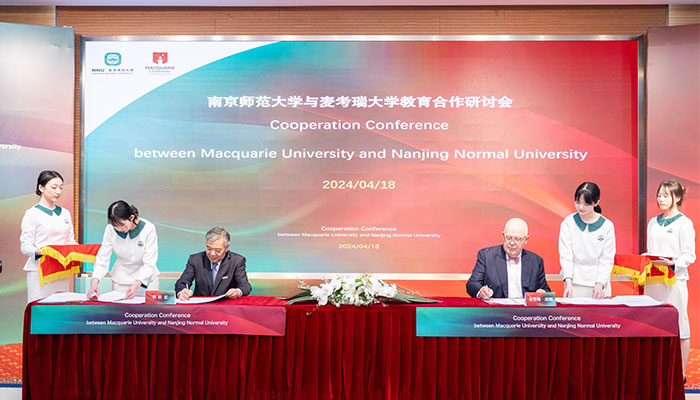A new study led by Macquarie University and spanning Sydney and Oslo has shown that exposure to extreme temperatures, such as those experienced during heatwave conditions, significantly reduces sperm quality in zebra finches, an iconic Australian bird adapted to life in arid environments. These findings, published today in the Royal Society Journal Proceedings B., suggest that rising global temperatures and increases in the frequency of extreme heat events could be a concern for male fertility and reproductive success in some birds.
Using climate-controlled conditions, the study in zebra finch found:
– Birds subjected to 40°C heat for just three days had a significant increase in sperm defects, which worsened with longer heat exposure
– Birds exposed to 40°C also showed a significant rise in body temperature, which endured even after the environmental temperature was reduced to 30°C
– Sperm quality improved after 12 days at cooler temperatures, but did not return to the levels observed prior to heat exposure
– In contrast sperm performance (i.e. sperm swimming speed/proportion of motile sperm) was relatively unaffected by extreme temperatures
– Defective sperm may affect male fertility
Zebra finch are capable of breeding year-round, and have been observed breeding when average temperatures range between 2.2°C to 36°C. However, maximum temperatures regularly exceed 40°C during the time when the largest percentage of the population is actively reproducing. Given male birds store sperm prior to mating in a specialised structure near the body surface (referred to as the cloacal protuberance), sperm can be subject to extreme temperatures when the birds experience extreme heat conditions potentially impacting sperm cells as they are being produced (i.e. during spermatogenesis).
This is the first study to look at the impact of ecologically relevant, extreme temperatures on sperm quality in birds, though past work has shown that high environmental temperatures (c. 32-35°C) can lead to infertility in domestic poultry.
First author from Macquarie University, Dr Laura L. Hurley, explained that normal sperm morphology is important for both male and female reproductive success in birds because only morphologically normal sperm will have the opportunity to fertilize an egg. This is because females store sperm in specialised organs in their reproductive tract, and then use stored sperm to fertilize eggs, and only morphologically normal sperm appear to be accepted into the storage organs.
“Importantly, while just one sperm is enough to fertilise an egg, birds require multiple sperm to penetrate the egg membrane for the process of fertilization to proceed,” notes Dr. Hurley. “As such, successful fertilization requires a number of good quality sperm to reach the egg so any process that reduces the number of good quality sperm available may have negative consequences for fertility.”
The study provides important insight into the impact of extreme heat conditions on avian breeding and raises concerns over the potential impact of heatwaves, which are increasing in both frequency and intensity as the global climate changes. An important next step is to directly examine the fertility consequences of reduced sperm quality in these birds in the wild and to test whether these effects extend to those bird species living in more temperate environments.
Macquarie University co-authors Dr Hurley and Dr Simon C. Griffith are from the Department of Biological Sciences; co-author Callum S. McDiarmid recently moved to the same department after working with co-author Dr Christopher Friesen in The University of Sydney’s School of Life and Environmental Sciences. Senior author Dr Melissah Rowe is from the Centre of Ecological and Evolutionary Synthesis and Natural History Museum at the University of Oslo in Norway, and is a long-time collaborator of Dr Griffith and co-supervised Dr Hurley’s PhD.



